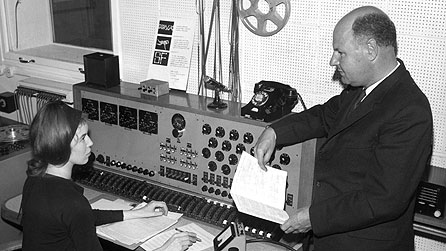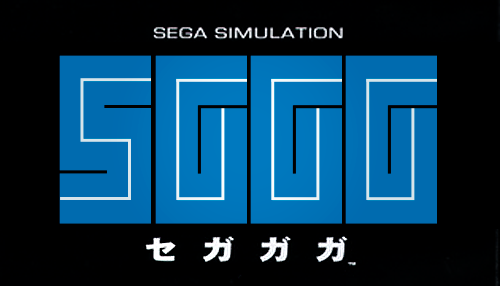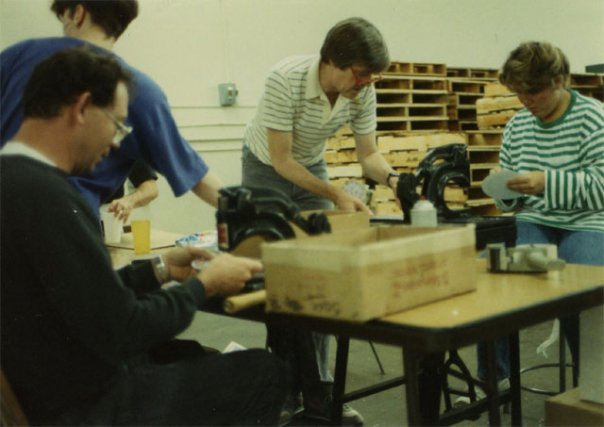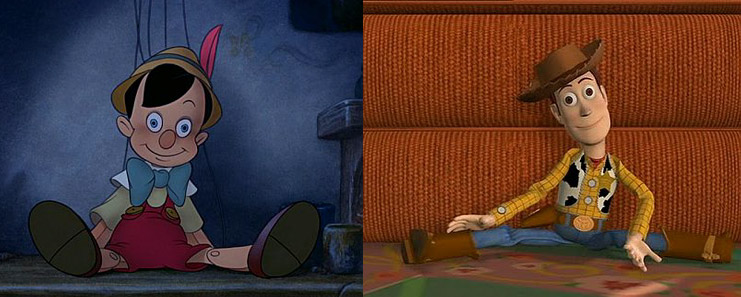Links and write-ups about beautiful things from around the web!
-
Delia Derbyshire Interview

The BBC will be airing a never-before-seen interview this week with Delia Derbyshire, the woman who co-composed and performed the original Doctor Who theme, probably the most famous piece of purely electronic music. For a great account of the production (no synths back then, only novel, painstaking work involving test tone equipment, razor blades and tape!), check out Mark Ayres’s A History of the Doctor Who Theme.
(The interview will air on Inside Out, November 15 at 7:30pm on BBC One – not sure when/if those of us not in the UK will be able to see it, though…)
-
Livewriter
Eyewriter 2.0 + Robot Arm = Livewriter. Combining the FFFFAT Lab’s inspirational Eyewriter project (named this week as one of Time’s top 50 inventions of 2010, and now glasses-free!) with their GML RoboTagger Sharpie Magnum-wielding robot arm, kids were able to try out the eye-tracking graffiti system to print out giant-sized tags of their own names. These projects touch on so many of my favorite areas of interest, so very cool.
-
Frank Zappa on “What‘s My Line”
[Video no longer available]
Frank Zappa as the mystery guest on What’s My Line. Pretty dry, to be honest, although some might find interest in hearing him go into surprising detail about the video-to-film process used in filming 200 Motels (it was shot and edited in PAL video then upconverted to 35mm, a novel process at the time).
So why do I post this? Because at the 2:50 mark he references the awesome Time Life photo of him and his parents, confessing that it was “too purple.”
-
Paris Qui Dort
[Video no longer available]
Paris Qui Dort (Paris Which Sleeps, aka At 3:25), an early short film by René Clair: a mad scientist uses a time-freezing ray on Paris, pausing everyone in their day-to-day life throughout the city. Everyone except for a random handful of people who happen to be up in the air at the time, who decide to take advantage of the perfectly still city. Proto-surrealist sci-fi with a dash of percolating social commentary.
I learned about this one from The Invention of Hugo Cabret, an excellent children’s historical fiction novel about early cinema, magic, automata, and Georges Méliès. Worth reading if you’re into any of those things.
-
Segagaga

The handsome logo for Segagaga, one of my absolute favorite video game concepts: you run a fantasy RPG version of Sega, the ailing game console company, fending off rival electronics behemoth
SonyDOGMA (at the time, the Sega Dreamcast was facing its untimely demise). A surrealist, sarcastic, postmodern metafiction of the Japanese game industry from the inside, satire on a shoestring budget with a bit of loving apology for what was about to happen with Sega and the business in general.From Edge magazine’s nice interview with SGGG’s developer, Tez Okano:
“The Japanese bubble burst in 1993 – that was the start of the recession and the economic downturn. At the very same time, the gaming industry was keeping going just as if it was the boom time. In 1999, it was becoming clear that the boom was fading fast for the industry. Coincidentally, we were making SGGG at this very turning point. Near the end of the game, the hero is fired because his company closes, and he finds refuge in a game store near Sega that actually existed! The store manager is Alex Kidd – he was also fired from Sega, when Sonic arrived. The message to the hero is that no matter how bad things look, there is no point in crying over the industry. You have to carry on – just like Alex Kidd, who is working hard.“
-
Physicist’s Goodnight Moon

What happens when a physicist considers the passage of time in Goodnight Moon? Chad Orzel, physics professor and blogger, attempts to measure it using the illustrated passing of the moon versus the wall clocks:
These two methods clearly do not agree with one another, which means one of two things: either I’m terribly over-analyzing the content of the illustrations of a beloved children’s book, or the bunny’s bedroom is moving at extremely high velocity relative to the earth, so that relativistic time dilation makes the six-minute rise of the moon appear to take an hour and ten minutes. Calculating the necessary velocity is left as an exercise for the interested reader.
(Photo credit: Chad Orzel)
-
Waterproof AlInGaP optoelectronics on stretchable substrates with applications in biomedicine and robotics
Translation: sheets of entirely flexible, waterproof, implantable LEDs. Yes, yes, medical and biotech applications, but imagine how interesting the tattoos at raves will be in a few years!
From Scientific American’s writeup:
As a demonstration of the technology the researchers put LED arrays through any number of experimental implementations. They deposited LEDs on aluminum foil, the leaf of a tree, and a sheet of paper; they wrapped arrays around nylon thread and tied it in a knot; and they distended LED arrays by inflating the polymer substrate or stretching it over the tip of a pencil or the head of a cotton swab. “Eventually the students just got tired” of devising new tests for the light-emitting sheets, Rogers says. “There was nothing that we tried that we couldn’t do.”
-
Mofo Ex Machina
Three printouts on Flickr from Penn & Teller’s 1980’s BBS, the login screen of which helped you set up one of their many “Three of Clubs” card force tricks. Here’s how they described it in the back of their Cruel Tricks for Dear Friends book from 1987:
Got a modem? Call MOFO EX MACHINA, the bitchin’est BBS in the jungle. Just call 212-764-3834, hit ENTER twice, and type the password MOFO (300 or 1200 baud, 8 bits, 1 stop, no parity).
-
Monkey Island Boxing

Know who assembled the retail boxes and whatnots for the original Secret of Monkey Island launch (including putting together the Dial-A-Pirate™ codewheels, as seen above)? The actual developers! I believe that’s Hal Barwood in the red glasses, and maybe that’s Dave Grossman on the left? If you have positive ID’s on anyone in the photo, let me know! The GameCola blog scored these photos of launch assembly from Tim Schafer’s Facebook page, including this good bit of trivia:
In one of these boxes, the developers slipped a five-dollar bill, signed by the whole team. It hasn’t been seen since.
The game industry’s definitely a bit different these days.
-
Woody Pinocchio

From Bat, Bean, Beam’s essay The Unmaking of Pinocchio on the difficulties Disney and Pixar both faced, decades apart, in creating lovable puppets, contrasted with the original source material from Carlo Collodi’s dark fairly tale of self agency and society:
When John Lasseter and his colleagues at Pixar set about making their first animated feature, they struck the exact same trouble that had beleaguered old Walt: two years into production, whilst presenting an early draft to Disney’s producers, they came to the realisation that their central character, Woody the Sheriff, was a sarcastic and unlovable brat. ‘A thundering arsehole’ were co-screenwriter Joss Whedon’s actual words. And so again the work of animation was halted, the production team regrouped and a major rewrite ensued, to ensure that Woody would be warmed to and therefore that the film could succeed. And in this case too I have little doubt that it was the smart thing to do; besides, there was no fidelity to be compromised in the process, no book to betray, unless one were somehow inclined to regard Pinocchio as an implicit ur-source, the ghost of puppets past haunting Woody from beyond the grave.
